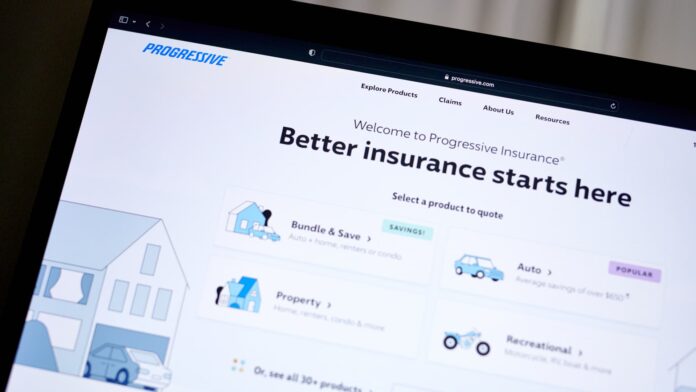Financial markets have given investors several scares and head fakes this summer, but one group is emerging as a winner with a balance of fundamental improvement in its business, and defensive qualities — insurance stocks. The iShares U.S. Insurance ETF (IAK) has gained 8.2% in the third quarter, compared to 2.4% for the S & P 500. The sector is beating the broader market on a year-to-date basis, as well. IAK 3M mountain Insurance stocks are outperforming in the third quarter. Insurance companies have seen their profit outlook normalize — and even improve — as the impact of the pandemic fades. That strength looks especially attractive compared against signs of economic slowdown elsewhere. Insurance providers are benefiting from “a pretty good operating environment plus a relative safe haven for folks concerned about other parts of the financial services sector,” said Paul Newsome, an analyst at Piper Sandler who covers property and casualty insurers. Andrew Smith, chief investment strategist at Delos Capital Advisors in Dallas, said he has been adding the IAK insurance ETF to his clients’ portfolios as a defensive hedge against the market. “Insurance almost to us trades like a utility,” Smith said, in that customers are sticky — reluctant or unable to change providers. Pandemic era struggles This rally for insurance stocks comes after they struggled in the immediatre post-pandemic era. Now, the rise in auto prices has cooled and insurance premiums have caught up, squeezing consumers but helping the companies. The rise in premiums hasn’t been the same in every state or at every company. Newsome pointed to Progressive as a company that got “in front of” some of the problems that caused big price increases for auto insurance, putting it in a better position to grow now. That stock is up nearly 50% year to date and is well-liked by Wall Street analysts. The period of rising costs put an emphasis on efficiency, which helped the larger insurance companies because they have more money to invest in technology, such as drones, Heal said. “The technology’s made it much easier for them to detect fraud,” Heal said. Because of the size benefit, Argus likes multi-line insurers including Travelers and Chubb , which recently saw an investment from Warren Buffett ‘s Berkshire Hathaway . The IAK ETF, which holds proportionally more of the larger insurers, has outperformed the more diversified SPDR S & P Insurance ETF (KIE) year to date, though the KIE is ahead in the third quarter. Combined, Progressive and Chubb account for roughly 28% of the IAK, while no one stock in the KIE currently has a weighting above 3%. Lingering issues There are some types of insurance that are on less sure footing. For example, the casualty coverage for commercial insurance has seen rising legal costs in what is sometimes called “social inflation.” New Jersey-based Selective Insurance reported a $176 million charg e for its casualty business in the second quarter, pushing its combined ratio above 100% — a key profitability threshold that insurers want to stay below. “Casualty is one of these businesses that is very predictable until they’re not,” Newsome said. “You can build up a big deficit in your reserves because there’s a lot of judgement that goes into setting those reserves. Life insurance companies may be another area of underperformance, as they could see corporate life insurance policies decline in a recession, Heal said. Those business lines may also be sitting on some unrealized losses from long-term bonds that fell in value as the Federal Reserve hiked rates. And of course, insurance companies are somewhat hemmed in by politicians and regulators. Every state has an insurance commissioner heading an office charged with regulating insurance in that state. If it becomes harder to raise insurance premiums, companies will have to decide whether they want to sell potentially riskier policies or see slower growth. “For the most part, if they can’t get their rate increases, they just won’t write new policies,” Heal said.
POPULAR CATEGORY
ABOUT US
THE USA PAGE, CALIFORNIA, USA BASED ONLINE NEWS PAPER PUBLICATION BY THE TIME INNOVATIONS LLC.
Editor-in-chief & Publisher: Mahbub Ahmed
Contact us: [email protected]
© 2025 The USA Page. All Right Reserved.




